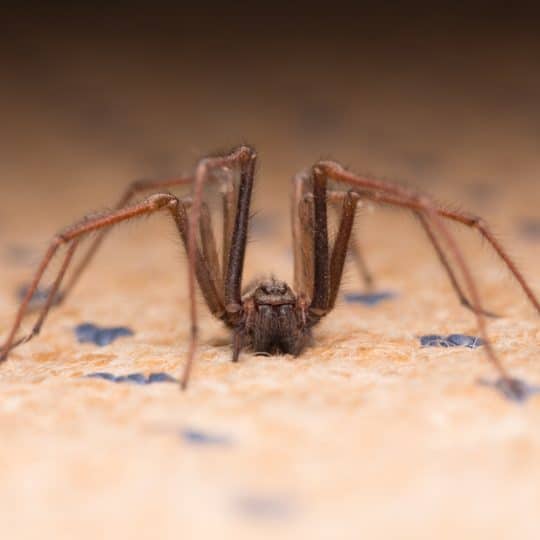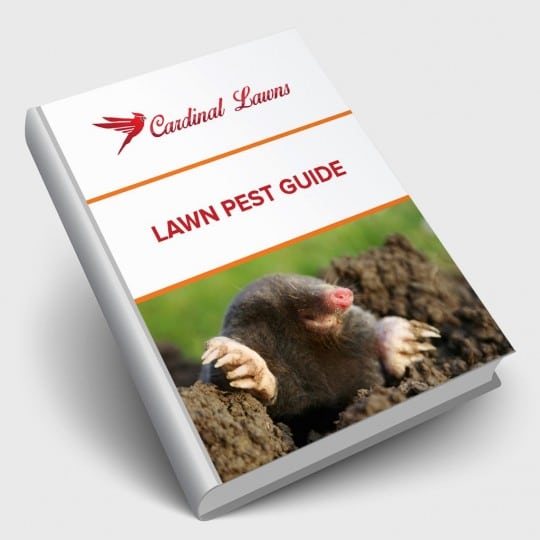Perimeter Pest Control: 5 Pests That WILL Find Their Way in
Posted
November 17, 2016

An estimated 40 million insects inhabit every acre of land in this area. How many of them are traveling in and out of your home right now, searching for food? Perimeter pest control can be a practical solution. This type of pest control application creates a barrier around the outside of your home to keep bugs out. Which bugs are we talking about? Chances are, it’s one or more of these five crawling creeps:
Ants
If ants have converted your counters and floors into miniature hiking trails and thoroughfares, you’re not alone. The black, carpenter, pharaoh, odorous and sugar ant species are all common household invaders in the central United States. They usually start their nests outdoors, but come in and out to get food and bring it back to their colony. Sometimes, though, they will take up permanent residence indoors. Their numbers tend to be most problematic near food sources.
Spiders
Despite their unpopularity, spiders are considered beneficial to humans. For example, each one can consume a large number of insects and help reduce pest populations in and around homes and landscapes. Also, spider bites are far less common and dangerous than people fear. Still, if you have found spiderwebs indoors or suspect that a dangerous species, such as the Black Widow, Brown Recluse, or Hobo Spider, has taken up residence, you’ll want to look into perimeter pest control right away.
Millipedes
Millipedes are technically not insects, but arthropod relatives of insects. They are short, brown, worm-like critters with up to 400 legs. They usually live in soil and decaying leaves around the foundation of a building. During the fall, though, millipedes often leave their leaf litter pile and crawl into homes. They can migrate inside in large numbers. Typically, they sneak in through cracks in foundations, around ground-level windows, and under doors.
Centipedes
The most common centipede species that invades homes in this area is the house centipede. These heinous-looking little creepers are characterized by a flattened body with many legs and two long antenna that protrude from their bodies. They run quickly along baseboards and walls, in search of small bugs to eat. Although they are not dangerous to humans, the centipedes’ furtive, darting movements and tendency to scurry around at night makes them seem all the more scary.
Silverfish and firebrats
Silverfish and their cousins, the firebrats, are wingless insects with three appendages on their hindquarters. Like the centipede, both species are frustratingly fast and seem to make a sport of outrunning people who want to catch or step on them. Silverfish are usually shiny silver, while firebrats have a mottled, gray-brown appearance. They can establish themselves quite comfortably in your home. Silverfish prefer humid environments. They will nest in the wall voids next to a kitchen or bathroom. Firebrats are more likely to be found in the boiler room or in a hot, dry attic. Both species typically migrate from the outside after nesting in roof shingles or siding. Their numbers can grow from no-big-deal to nightmarish pretty quickly.
For these and other home invaders, try perimeter pest control.
If you suspect problems with bugs invading your home, contact Cardinal Lawns. Our perimeter pest control program is safe and applied only to the exterior of your home. It essentially lays down an invisible moat that keeps crawling insects away from the mighty fortress of your home. Call the professionals at Cardinal today at 614-808-4446.

Download Your FREE Lawn Pest Guide
Pests become most prevalent during the heat and humidity of summer. Take some time to learn about the signs of infestations before any damage can be caused to your landscape. This handy guide will teach you how to spot common lawn pests and how to keep them from causing harm to you and your property.